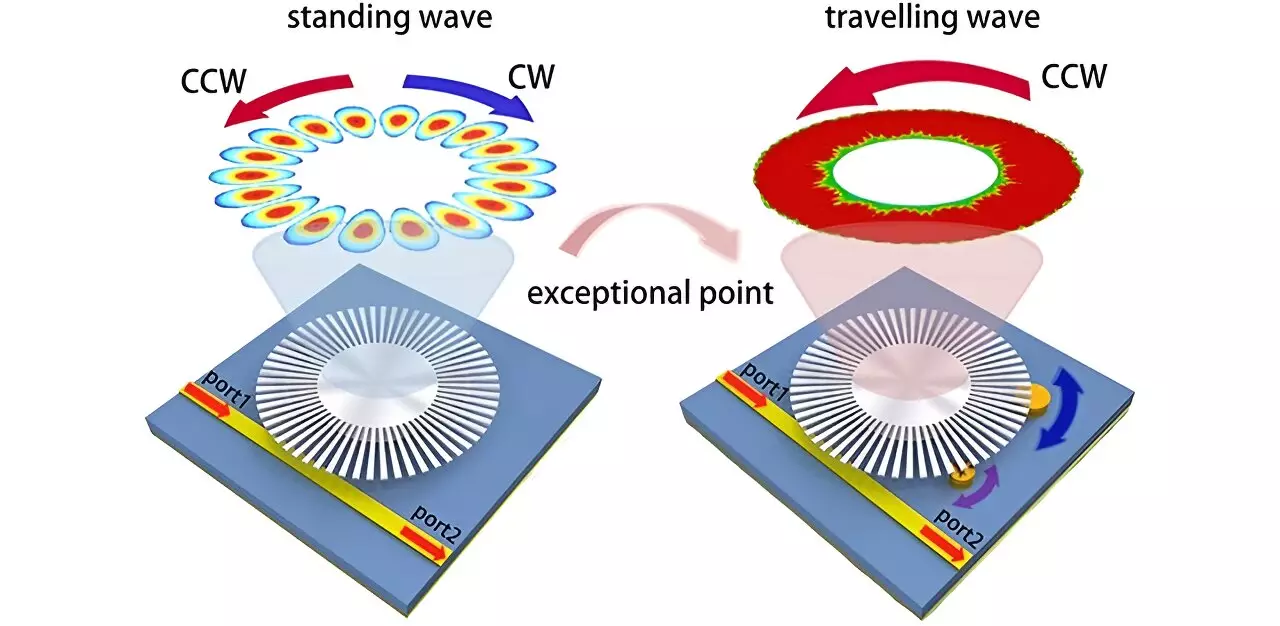The realm of sensor technology has seen extraordinary growth in recent years, propelled by advancements in photonics and materials science. As researchers explore new frontiers in how we can detect and measure various phenomena, one area stands out: non-Hermitian physics. This innovative field has opened doors to manipulating light in ways previously thought impossible, leading to a new wave of sensor sensitivity breakthroughs.
Recent findings published in the journal *Advanced Photonics Nexus* have spotlighted a groundbreaking sensor design that capitalizes on exceptional points (EPs). These remarkable sensors have taken sensitivity to unprecedented levels, a far cry from what traditional sensors achieve. At the core of this innovation is a newly developed sensor integrated with a single spoof localized surface plasmon (LSP) resonator, a significant advancement over existing technologies.
Exceptional points are unique phenomena where eigenvalues and the associated eigenvectors converge, resulting in enhanced optical sensitivity. While prior EP-based sensors, such as the widely studied whispering gallery mode (WGM) microtoroids, have indeed shown improved sensitivity, they come with inherent drawbacks. These devices generally feature fixed EPs once manufactured, leading to challenges in precise calibrations. Furthermore, their operational frequency ranges are often limited, inhibiting their capacity to detect minuscule particles due to modest perturbation strength and excitation efficiency.
The recently introduced sensor design tackles these limitations head-on by employing spoof LSP resonators, capable of simulating the behavior of localized surface plasmons. The innovative construction involves a suspended setup over a microstrip line, enhanced through two movable Rayleigh scatterers, which grant unparalleled reconfigurability across a broader spectrum of frequencies. This adaptability not only mitigates manufacturing imperfections but also amplifies the sensor’s ability to detect exceptionally tiny particles.
One of the primary advantages of the new sensor lies in its reconfigurability. The movable Rayleigh scatterers facilitate the dynamic formation of EPs, allowing the sensor to recalibrate itself in real-time. This feature enhances both precision and flexibility, essential traits for modern sensing applications.
Moreover, the design amplifies the perturbation strength by confining electromagnetic fields to the resonator’s surface, which significantly heightens sensitivity to disturbances from nearby particles. By incorporating multiple plasmonic resonance modes, the sensor not only widens its operational bandwidth but also bolsters its detection range.
This technological innovation marks a significant progression in sensor capabilities. The newly developed sensor can detect particles as small as 0.001 times the wavelength of light, a feat that opens up myriad possibilities in scientific research and industrial applications. As a result, this breakthrough could usher in a new era of sensitive detection systems, enabling more detailed analyses in fields ranging from biomedical research to environmental monitoring.
The advancements in sensor technology propelled by non-Hermitian physics and the ingenious use of spoof localized surface plasmon resonators indicate a promising future for the field. The development of exceptionally sensitive and reconfigurable sensors holds the potential to revolutionize not only how we measure minute particles but also how industries leverage these insights for innovation. The novel sensor design poised to make waves in scientific inquiry and practical applications exemplifies the profound intersection of physics and technology, paving the way for future breakthroughs.


Leave a Reply